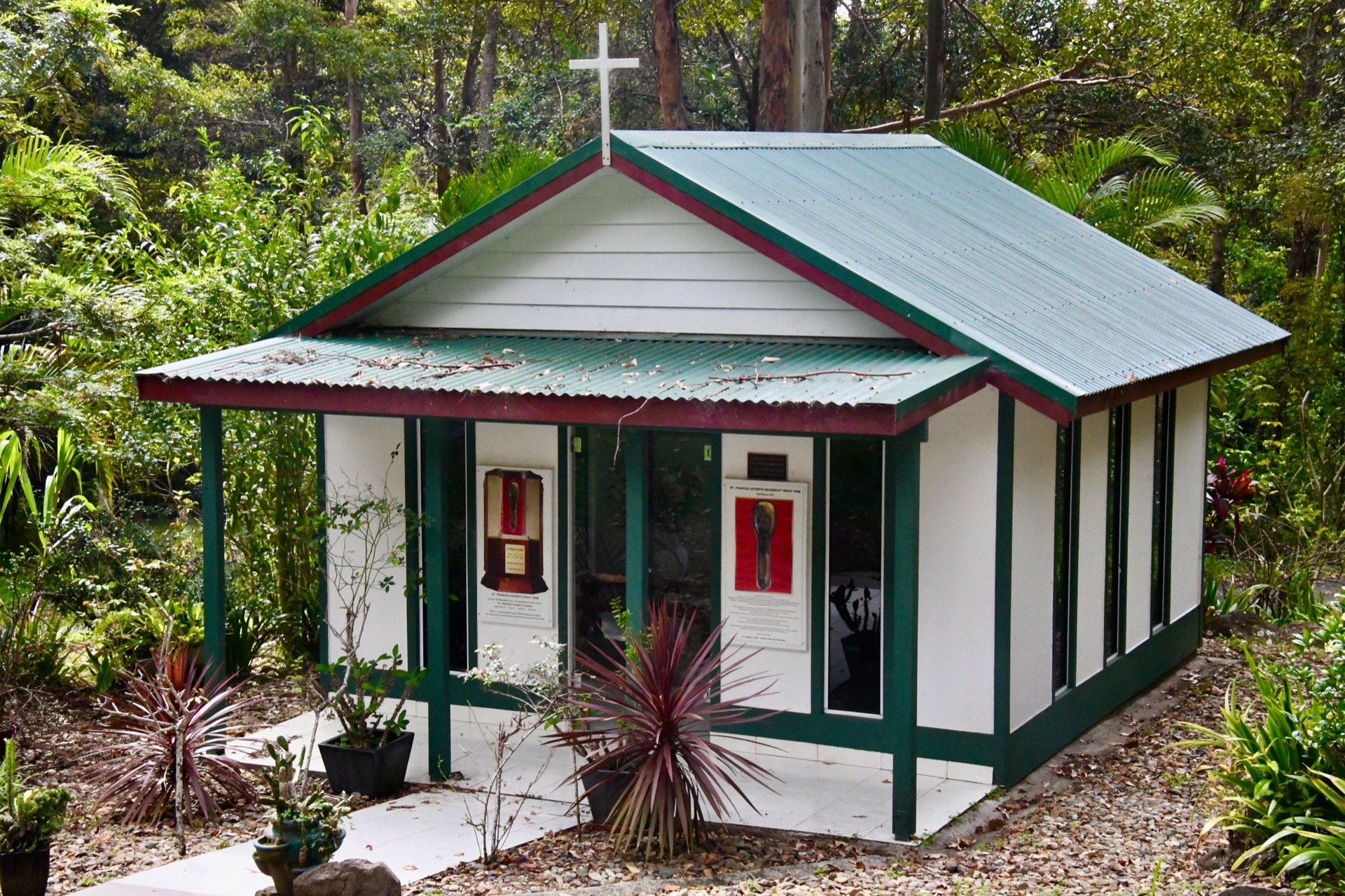This chapel has an interesting history. The Tongan community, which had it built, initially wanted a statue of St Peter Chanel, in whose honour they planned to build a chapel. The statue of St Francis arrived from the overseas vendors instead. Deciding against sending it back and seeing in it the providence of God, they decided to build a chapel in honour of the great Missionary of the Indies. On the day of the blessing of the chapel, it turned out that the first-class relic visiting Australia at the time (the right arm of the Saint) was available to be taken to Marian Valley for a visit. All these coincidences go to show that God certainly wanted a chapel built in honour of His amazing Missionary.
St Francis Xavier
Feast Day 3 December
Francis was born on 7 April 1506, the youngest son of an aristocratic family, in the castle of Xavier in the Kingdom of Navarre (later incorporated into modern-day Spain). At 19, he travelled to Paris to study at the Collège Sainte-Barbe. There he met Ignatius of Loyola. Initially, his interests were quite worldly, and he avoided the company of Ignatius, who, at 15 years his senior, was leading a more ascetic life after his conversion. Over the course of a few years, Ignatius’ good influence eventually won over the younger Francis. On 15 August 1534, setting in place the foundations for the Society of Jesus (Jesuits) in a small chapel in Montmartre, Ignatius, Francis, and five others made vows of poverty and chastity and a vow to go to the Holy Land as missionaries when their studies were completed in two years.
In 1536 Francis and his companions left Paris to make their way to the Holy Land. They journeyed to Venice, where Francis was ordained a priest, together with Ignatius, on 24 June 1537. The war with the Turks blocked any chance of them travelling on to the Holy Land, and they subsequently travelled to Rome, placing themselves at the service of the Pope. Preparations were made in Rome for the definitive foundation of the Society of Jesus. The order was approved by the Pope verbally on 3 September 1539 but written approbation was not secured for another year.
In the meantime, Francis was appointed, at the request of the King of Portugal, to evangelise the people of the East Indies. He left Rome on 16 March 1540 for Lisbon, then on 7 April 1541, he embarked on a sailing vessel for India. The voyage was tedious and extremely dangerous, but he eventually landed at Goa (India) on 6 May 1542. Initially, he preached and ministered to the sick in the hospitals. He would also go through the streets, ringing a little bell and inviting the children to hear the word of God. When he had gathered a number, he would take them to a church and would there explain the catechism to them.
From Goa, Francis headed south and spent three years preaching to the people of South Western India, converting many, and reaching in his journeys even the Island of Ceylon (Sri Lanka). He endured great difficulties and hardships at the hands of both local rulers and wayward Portuguese soldiers who retarded his work by their bad example and vicious habits. By 1545 Francis was travelling further afield, preaching the Gospel in Malacca (Malaysia), the Molucca Islands (Indonesia), and perhaps even Mindanao (Philippines), laying the foundations for permanent missions. He also journeyed back to Goa to organise the expanding affairs of the Society of Jesus, sending other missionaries to follow up his work in various places. In 1549 he began his journey to Japan, landing at the city of Kagoshima on 15 August. After working for about two and a half years in Japan, he left the mission in the hands of others and returned to Goa, arriving there at the beginning of 1552. By April, he left Goa again, eventually arriving at the small island of Shangchuan near the coast of China. While planning the best means for reaching the Chinese mainland, he took ill with a fever and died on 3 December 1552.
St Francis Xavier is noteworthy for his courageous missionary work as an organiser and pioneer. He traversed the greater part of the Far East in only ten years. When one considers the challenges of language, the conditions of travel, the means of transport, and the delays and difficulties which beset him at every stage, it is, even physically, an astounding achievement. It is even more remarkable when one considers that he left behind him a flourishing church wherever he went and that the effects of his labours remain to the present day. He is said to have converted more people than anyone else has done since Saint Paul. He was canonised in 1622 and in 1927 proclaimed by Pope Pius XI, along with St Therese of Lisieux, Patron of all Catholic Missions (which at the time included Australia).


